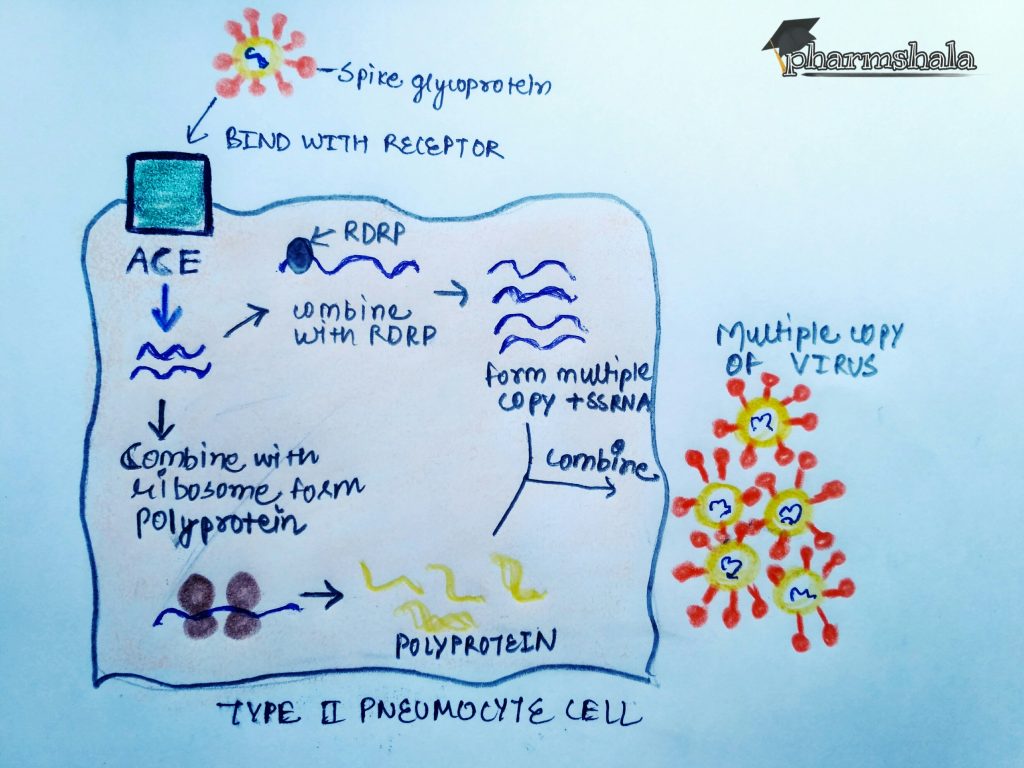How does coronavirus affects human body?
Human body contact either with an infected person’s respiratory secretions, through cough or sneeze, and physical contact with them. Once the virus enters into the body its work can begin.
STRUCTURE OF SARS CoV-2

The virus goes inside lung reach in alveoli infects pneumocytes II cells. Coronavirus mainly attacks pneumocytes II cells because virus spike glycoprotein binds with specific receptors ACE (angiotensinogen converting enzyme).
Two types of penumocytes present in alveoli 1. penumocyte-I (help in gases exchange) 2. penumocyte-II ( release surfactant that prevent collapsing of alveoli)
Then the virus release +ssRNA inside the cell by endocytosis mechanism and used host translation machinery to form polypeptide that helps in the formation of the virus envelope.
+ssRNA also combines with RDRP( RNA dependent RNA polymerase) and form photocopy of +ssRNA. Copies of RNA combine polypeptide and form multiple viruses. These viruses come outside of the cell and detected by macrophages. In action, macrophages release IL-1, IL-6, and TNF(tumor necrosis factor).
IL-1, IL-6, and TNF in alveoli increase the permeability of endothelial cells. Then the fluid is filled between alveolar cells and capillaries cause alveolar edema. so, Oxygen not diffuses properly then pO2 of blood decreases. further breathing rate and heart rate increase
Due to decrease in oxygen demand of vital organ not fulfill. so, chances of organ failure increase.
IL-1, IL-6 fuses with blood reach to the hypothalamus. These factors detected by the hypothalamus release specific prostaglandins and start elevation in temperature. So that most common symptom of corona positive patients fever, shortness of breathing, dry cough.

